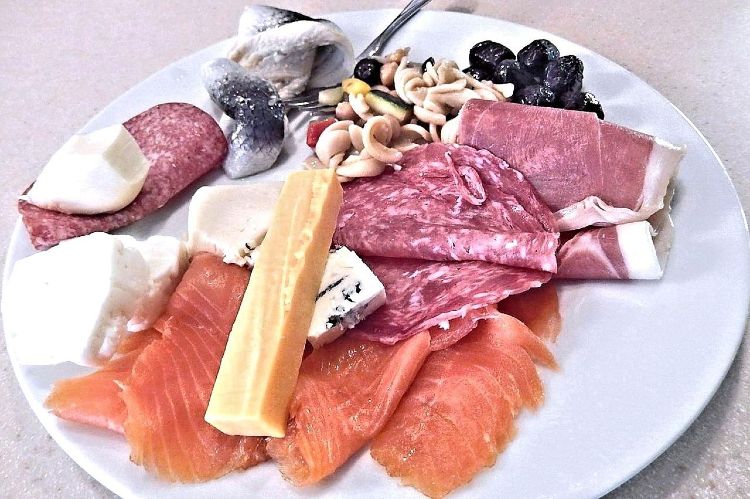Kitchen Enamelware
Introduction:
Girl’s Own Store in Bridport in Dorset is a rare find. It is a very beautiful shop in what is one of Dorset’s most popular seaside resorts and it manages to mix both traditional homewares with vintage kitchenware and homemade knits. It is the sort of shop that Kirstie Allsop would gush and rave about, and spend a small fortune on one of everything in every colour, while, no doubt, retiring to eat at The Bull Restaurant, one of the best establishments on the South Coast. Its owner Sara Mahon is a very clever retro buyer and stylist, and she is a very accomplished Fair Isle knitter to boot, All around the shop you will find handknitted tea pot cosies, cloths, gloves, berets and tank tops, as well as wire hooks and baskets, house signs, slate memo boards, and jaunty tea towels. At her wonderfully informative and colourful website, www.girlsownstore.co.uk she has also started writing a Blog. The Foodie Bugle has persuaded her to share her household wisdom with us, and this month we are starting off with a small study on enamelware, of which Sara knows a thing or three.
Kitchen enamelware by Sara Mahon of Girls Own Store
Enamelware can be found in almost every country or retro-style kitchen. In some form or other it’s been around for centuries. So it’s worth a few moments to consider a product we take so much for granted.
By definition, enamel is created by the fusing of powdered glass on to a substrate by firing at a very high temperature (760 – 890 degrees C). On cooling this powder hardens to a smooth coating. As a decorative art enamelware dates back to ancient Egypt and China, but in it’s more functional form enamelware came into existance through 18th Century advances in technology. Until then most cooking was done using glazed stoneware which was best suited to baking and iron vessels were needed for cooking at high temperatures. Adding an enamel coating made ironware easy to clean, hygienic, resistant to chemicals, staining and scratching. It soon became common for cooking, storage and all manner of domestic and household uses.
Steel later replaced the weightier iron as the base material. Enamelware in a wide range of colours was produced in vast quantities across Europe throughout the 19th century and the first half of the 20th century. It’s last great moment of glory in the UK was a fashion for distinctive cream and green through the 1930′s and 40′s. Since the 1950′s new materials like Teflon, Pyrex and new plastics displaced enamelware to a large degree, and although functional, none of these could really be said to have the all round appeal of enamelware. Falcon Enamelware originated in the 1920′s and still produces a very useful range today. As well as numerous mugs for camping, teapots are particularly popular here in my shop, Girl’s Own Store, in Bridport in Dorset. (www.girlsownstore.co.uk). Many say that enamel teapots help to make the best tea. The enamel coating gives a good clear flavour, and the trick is to never wash the inside of the pot. The grimier the interior appears (as the tannin coatings build over time and many brews) the better the taste.
Sara Mahon
Sara Mahon is the owner of Girls Own Store in Bridport in Dorset. www.girlsownstore.co.uk
- Homepage
- RSS Feed
Enamel coffee pots
Enamel vintage water jug
Enamel Victorian hot water carrier
Enamel mugs and soup kettle
Enamel soap dish with Marseille soap
Enamel frying pan with eggs

